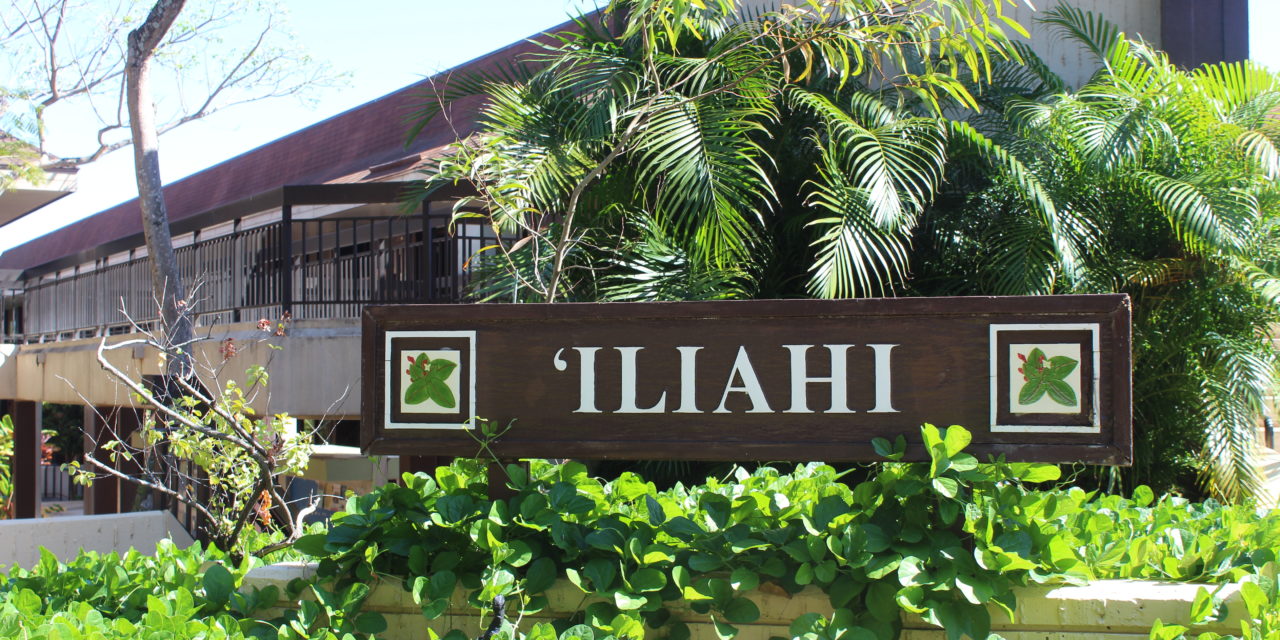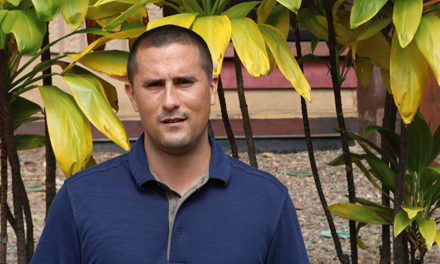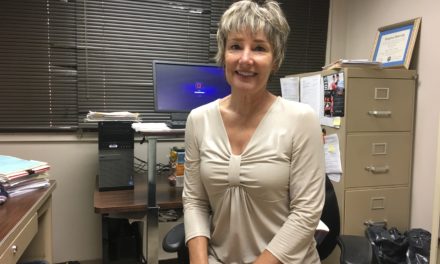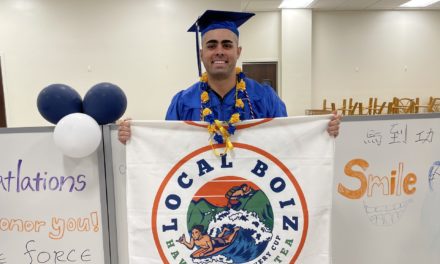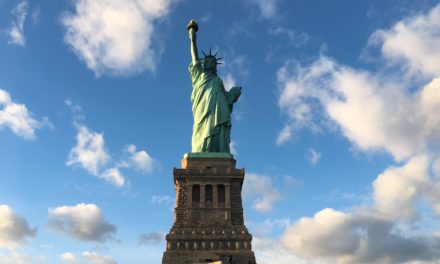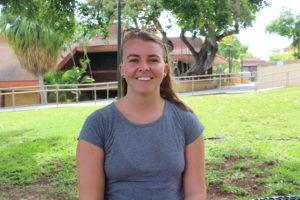By Lexus Yamashiro | Staff Writer
ʻIliahi, ʻŌhiʻa, and Lama are just three of the 20 names of KCC’s buildings, all named after plants endemic or indigenous to Hawaiʻi. With the information of these connections often dismissed or unknown by those on campus, it is a matter that Colette Andrade-Fujii, a volunteering member of KCC’s Native Hawaiian Plant Advisory Committee (NHPAC), hopes to bring more attention to.
“If I tell you ‘OK, you need to go to Mānele,’ what is mānele?” Andrade-Fujii said. “What is the meaning of mānele? What is it used for? Can you tell me? No, ’cause it’s changing, every time it’s changing …. A refresher course of why our buildings are named after a Hawaiian plant, what is the meaning of the plant and how does it now [connect] and what is the building used for … that’s what I would like to read.”
The names of each building were chosen under the influence of reflecting a relationship between the function of the building and plant but have since lost accuracy in staying true to the connection they share. The ʻIliahi building is just one example of the campus structures that has gone through major changes. With programs and services that were once provided in ʻIliahi now gone or relocated elsewhere, it is questionable as to how the ʻiliahi (sandalwood) plant serves the resources now found within its building.
In the late ’80s, the ʻIliahi building was home to KCC’s Learning Assistance Center (dedicated to mathematics and English), Computing Center, and basic skills classrooms. It changed in 2008 and became the Kahikoluamea Center (specifically the second floor above Subway), a space that was designed to consolidate resources and services for enrolling students, including embodying Hawaiian values.
Since then, the second floor of ʻIliahi was reshaped in Spring 2017 into what is now known as Kīkaha o Laeʻahi, a center aimed toward student success that Andrade-Fujii said houses a “one-stop shop” where students “go to start off [their] college career,” being that she also serves as the First-Year Experience (FYE) Program student support specialist. As a place that harbors programs and services such as the Kapoʻoloku Program for Native Hawaiian Student Success, Employment Prep Center, and Pāhihi Program for Returning Adults that assist students on campus, there is wonder as to how the ʻiliahi plant connects with these resources.
Endemic to Hawaiʻi, ʻiliahi is Hawaiian sandalwood that grows as a small, evergreen tree or shrub; this plant was often used to add a scent to tapa or make musical instruments. The ʻiliahi plant that is still found directly to the left of its building’s sign on campus is one that FYE Program coordinator and Lunalilo Scholars Program director LaVaché Scanlan observed has not grown any bigger for the past 18 years.
It was after Scanlan found out that other native plants were then placed around the ʻiliahi plant that she noticed it appeared to be healthier and thriving in its long-time environment. This sudden change is what Scanlan believes could be a new connection between the plant and building’s function, explaining that the help of the other plants to assist the ʻiliahi to thrive is similar to how the resources available in Kīkaha o Laeʻahi can benefit students in succeeding throughout their time in college.
While the connection between these native plants and respective buildings may still be unclear, there are still a few on campus that NHPAC chair and botany professor Mike Ross said still share a comprehensive relationship.
“I think some still fit really well, like Lama Library,” said Ross, who has been teaching at KCC for seven years. “Lama is enlightenment and that’s hopefully what students achieve, when they’re in the library, is knowledge … “
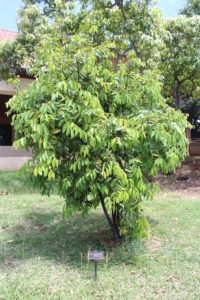
The lama plant is found directly behind its building’s sign with a small, black stand sticking out of the ground labeled with the plant’s name and other scientific facts about it. (Photo by Lexus Yamashiro)
The ʻalani plant is another that Ross noted still shares a connection with the function of its building being that the small flowers that grow along the stems are symbolic to the children who attend the ʻAlani Children’s Center. Koa, known for its wood to build furniture and canoes, is another plant that shares a connection with its building since all classes relating to art are held there.
Currently, the only buildings that have their plants near them are ʻIliahi, ʻIlima, Kokiʻo, Lama, and Mānele. Ross said he hopes that plans to implement more of the buildings’ plants on the campus can happen because native plants have a lifestyle that require less water and prevent erosion, ideal benefits that are in line with KCC’s efforts to be sustainable.
Aside from wanting students to understand the background of these plants and the relationships they share with their respective buildings, Ross said the language in which these plants are pronounced under is significant to comprehend, too, specifically for the building names that include a kahakō and/or ʻokina.
“The plant name is olonā … ” said Ross, who noticed that this particular building’s name has been mispronounced by many on campus. “Since [Hawaiian is] an oral language — it wasn’t a written language — correct pronunciation is essential.”
As Ross and the other leaders and members of NHPAC work to develop ideas of how to continue raising awareness of the native plant and building connections, he said the overall purpose that these connections provide for KCC as an indigenous-serving institution is already significant and has yet to be understood more by those on campus and out in the community.
“I think it just really shows a commitment, long-term, by the campus to focus on things that are important not just ecologically but to the Hawaiian culture, Hawaiian people,” Ross said. “Many of these plants were essential for Hawaiians to survive, for making various aspects in material culture, for weapons, for fishing implements and other things like that … I think whether students realize it or not, by learning the names of the buildings where their classes are, they’re learning the names of native plants.”

